| Back to Back Issues Page |
 |
|
Bangkok Travelbug January 15 Caves in Ratchaburi December 30, 2014 |
| Hello
Caves in Ratchaburi The caves in Ratchaburi have some beautiful features and some strange inhabitants as well. Most of these are limestone caves formed thousands of years ago when large parts of central Thailand were under water. The caves were exposed when the sea level dropped to present-day levels. Rain water over the years seeps through the crevices in these caves and dissolves calcite, a mineral in the rocks found in limestone caves. The water with dissolved calcite further absorbs carbon dioxide to form calcium bicarbonate. When the water flows out of the rock and into the cave, it releases the carbon dioxide and solidifies to leave a deposit of calcite on the roof. Over time, these deposits will grow from the roof of the cave to form stalactites. 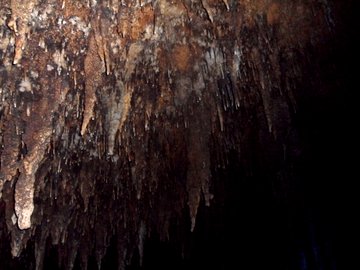
StalacTites (from the top) Some of the water will drip to the floor of the cave and leave the calcite deposits on the floor to form over time stalagmites. 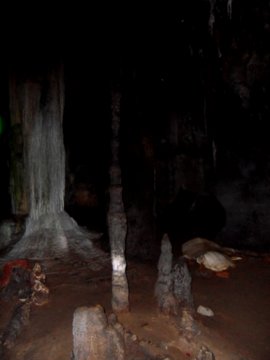
StalaGmites (from the ground) These stalactites and stalagmites come in various shapes and colours to produce a dazzling display of nature. 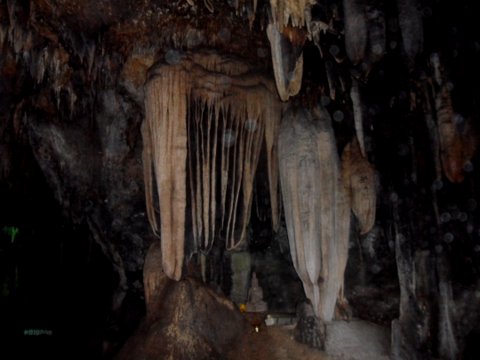
Beautiful formations Some stalactites join up to look like curtains or drapery, stalactites and stalagmites link up to form columns and little stalactites protrude from the roof looking like drinking straws. Other rock surfaces sometimes form strange shapes and it’s left to your imagination what these shapes look like. 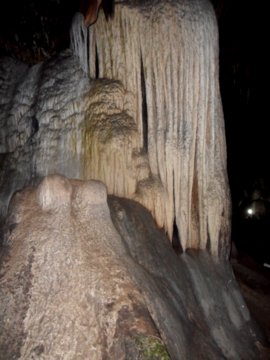
Drapery 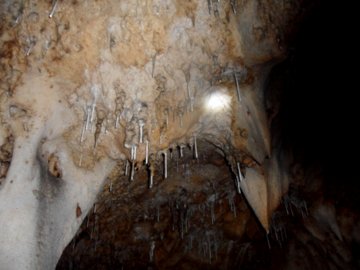
Straws 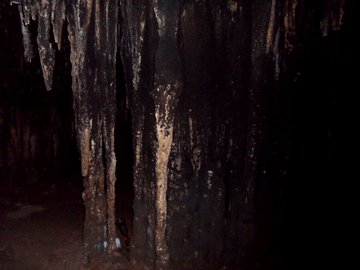
Columns When visiting these caves, you are advised to dress in light clothing as the air in the cave is very humid. If you encounter difficulties in breathing leave the cave immediately. The constant emission of carbon dioxide (CO²) is probably the cause. The depth of the cave in the mountain is another reason. If you’ve got asthma, hypertension and heart problems, it’s not advisable to enter the cave. Wear rubber soled shoes as the floor of the cave is very wet and slippery. Do not touch or hold any part of the cave especially the stalactites and stalagmites as the brittle parts may break off. These deposits take hundreds of years to form!! The rate of growth is about two cm every five years. The last cave we visited isn’t famous for its rock formations but for the bats that live in the cave. Yes bats, thousands and thousands of them. So join us as we explore these caves in Ratchaburi. Table of contents Chomphon Cave The first cave we visited was the Chumphon Cave (chomphon - field marshal) and I approached it with some trepidation. The rusty gate and the rickety stairs with broken planks didn’t add to my confidence. It took me some time to adjust to the dim lights and I proceeded cautiously down feeling quite claustrophobic as this was the first time I was in a cave. 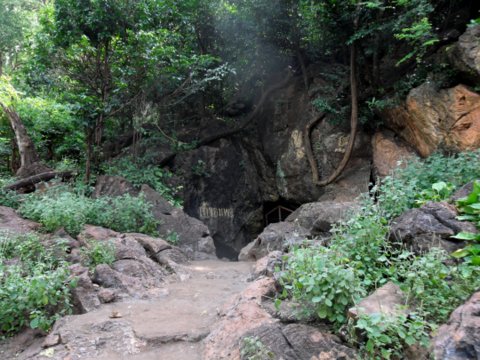
The way to the cave mouth 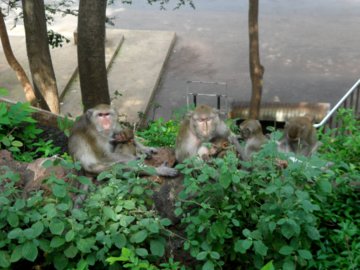
Some of the local inhabitants 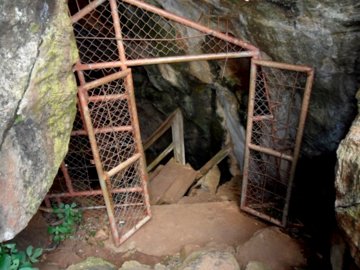
The cave entrance Here are some of the shots I took inside. I didn’t stay very long as I wasn’t very confident of finding my way out. Perhaps my fears were unfounded. 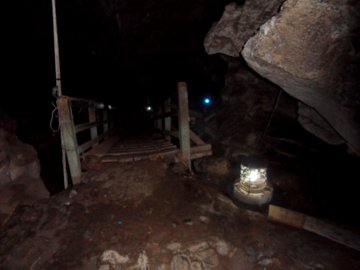
The way down 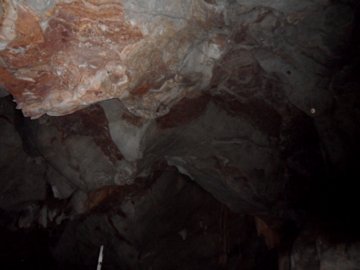
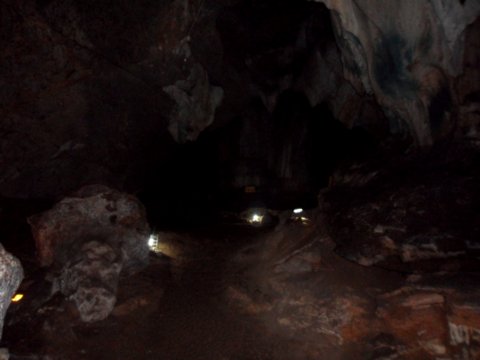
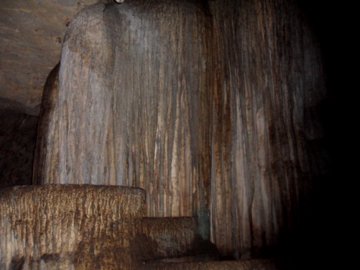
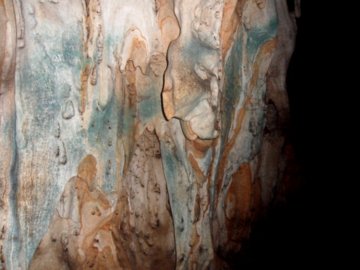
I was a little relieved when I got out. Table of contents Khao Bin Cave Khao Bin Cave, the second cave, is the best organized with information brochures and an optional guide who was a great help. The way in was well lit and with signs to show the way. Khao Bin Cave was opened when the Forestry Department blew an opening to the cave with explosives in 1982. The interior of the caves covers an area of five rai (8,000 sq m or 0.8 hectare or about two acres) and the cave is about 300 m deep into the mountain. The cave is organised into eight chambers with each chamber characterised by special rock features. The tour circuit is about 500m. Here are some of the delightful scenes we encountered. 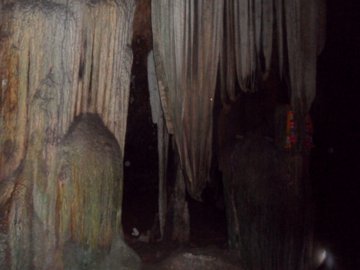
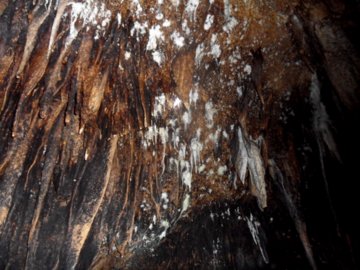
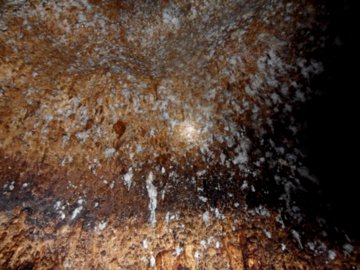
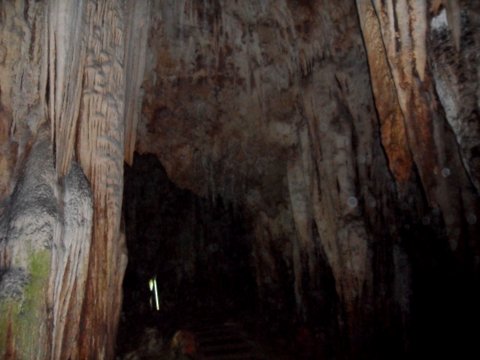
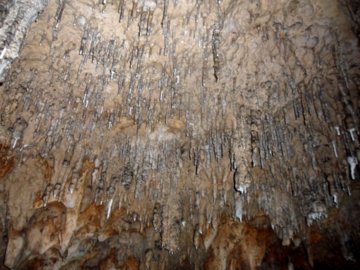
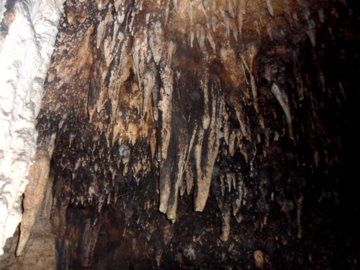
There were also some very unusual shapes formed by the rock. 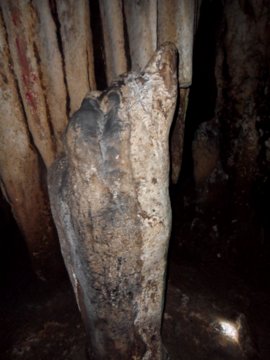
Dolphin 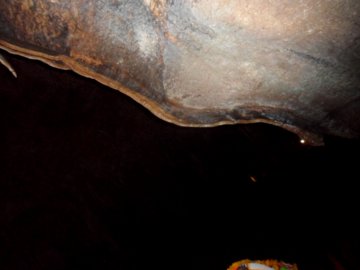
Snake 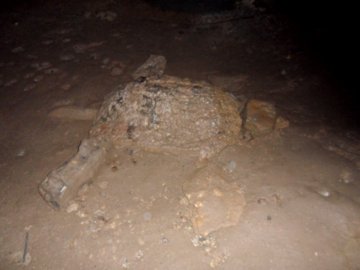
Turtle Table of contents Khao Ngu Park and Cave The cave at Khao Ngu (Snake Mountain) is at the top of a long flight of steps. After the first two caves in the morning, we gave this a pass. However there are some beautiful scenes around this mountain park with a wide lake (what is shown as the Khao Ngu Stone Park on the map). 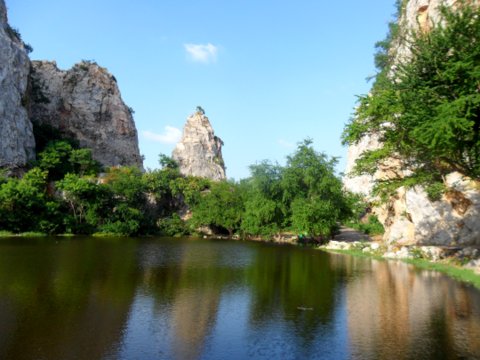
Scenic beauty 
View from the top The scenery in the vicinity is peaceful and beautiful for photo taking. Over at the public park to the north, there’s a tall statue of a Buddha in the standing pose. 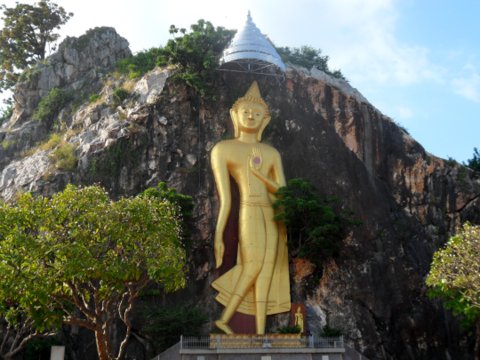
Standing Buddha at the public park Table of contents Khao Chong Phran Cave We saved the best till last. In any case we had to wait till the evening to visit Wat Khao Chong Phran, the Bat Temple with the Bat Cave at the top of the hill. It’s in the evening that the bats emerge from the cave. 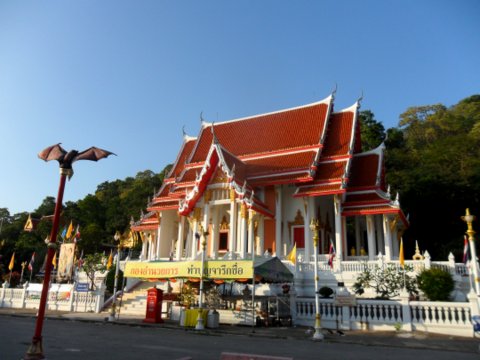
Wat Khao Chong Phran – the Bat Temple People gather in the open field every evening to watch this daily occurrence at around 1750 – 1800 hours, rain or shine when countless waves of bats flying out of the cave continuously for more than half an hour earning the cave the name "Hundred Million Bat Cave". 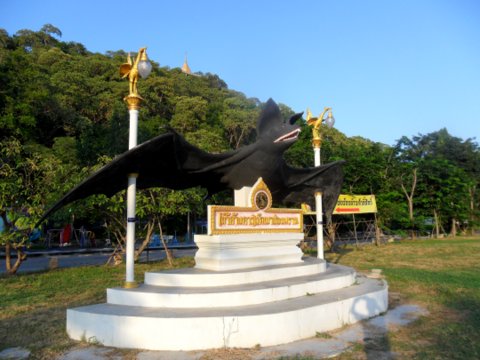
Bat Cave – the cave is near the chedi on the hill Thankfully these bats don’t feed on fruits or the orchards in the surrounding area would be devastated. The bats feed instead on the insects that feed on the fruits, so the bats are actually complementary to the orchards. Bat droppings are collected and sold as fertiliser to the public on Saturdays by Wat Khao Chong Phran. Apparently the diet of the bats causes their droppings to make very good fertiliser which costs 25 baht per bag. 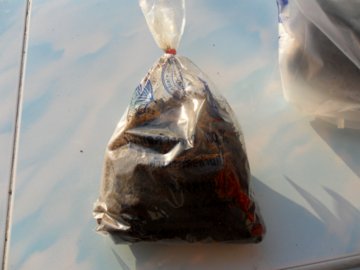
Bag of bat droppings Saturday mornings are the only time visitors are allowed up to the cave after the droppings have been cleared. I can’t imagine going into a cave with thousands upon thousands of bats hanging over my head. At 1750 hours that evening, the first waves of bats flew out from the top of Khao Chong Phran. The first few waves were a trickle compared to what was to come later. 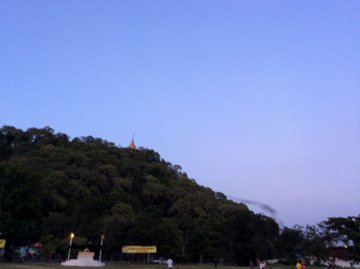
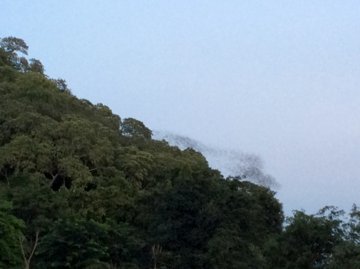
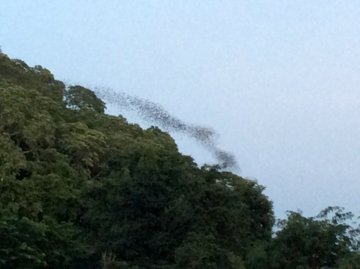
The bats emerge from the cave As it grew darker, more and more bats emerged flying over our heads in a thick cloud. They seem to fly in a tight wavy formation one after another in a set direction. 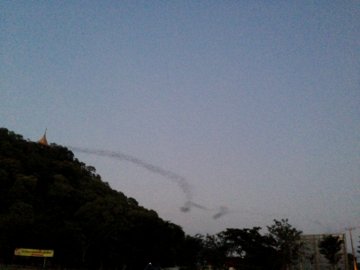
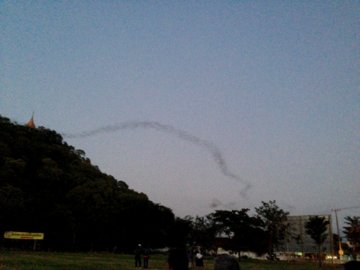
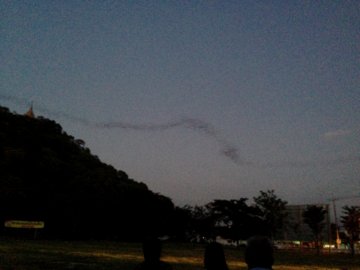
Weaving in the dark Here’s a video of the scene, taken just after 1800 hours. They were still flying out when we left at about 1830 hours; just imagine the number of bats. Click here to view video Acknowledgment My thanks to Phattaraporn Chaoensuk for all the photos and video on the bats at Wat Khao Chong Phran Table of contents Map to Caves in Ratchaburi View Caves in Ratchaburi in a larger map Opening hours and admission Chomphon Cave Opening hours 0900 – 1630 hours Admission: 10 baht for adults and 5 baht for children Khao Bin Cave Mondays – Fridays 0800 – 1630 hours Saturdays and Sundays 0800 – 1700 hours Admission: 20 baht The guide is optional and is recommended. Just give a reasonable gratuity. Khao Ngu We didn’t visit the cave, admission to the surrounding park is free Khao Chong Phran Cave Be there by 1745 hours, the bats will fly out at about 1750 hours and continue right on till 1830 hours onwards. Admission is free How to get to there By car Go along Phetkasem Road (highway 4) till you get to Ratchaburi city. We suggest that you travel along highway 3087 and start with Chomphon Cave in Chom Bueng district in the west. Work progressively eastwards along highway 3087 and visit Khao Bin Cave next. Break for lunch then visit Khao Ngu Park & Cave that is just north of Ratchaburi city. This will take you till late afternoon. Travel along highway 3089 all the way to Wat Khao Chong Phran and the Bat Cave. Arrive around a little past five in the evening, take break and wait for the bats to appear. Table of contents Hotels in Ratchaburi
If you enjoyed reading this e-zine, please forward it to a friend. If you received this from a friend and found it interesting, please subscribe at Bangkok Travelbug. What do you think of the Bangkok Travelbug? We love to hear from you What other subscribers have said Till next month then. Eric Lim Tour Bangkok Legacies Find us on Facebook Copyright@2008-2014 Tour Bangkok Legacies All rights reserved |
| Back to Back Issues Page |
